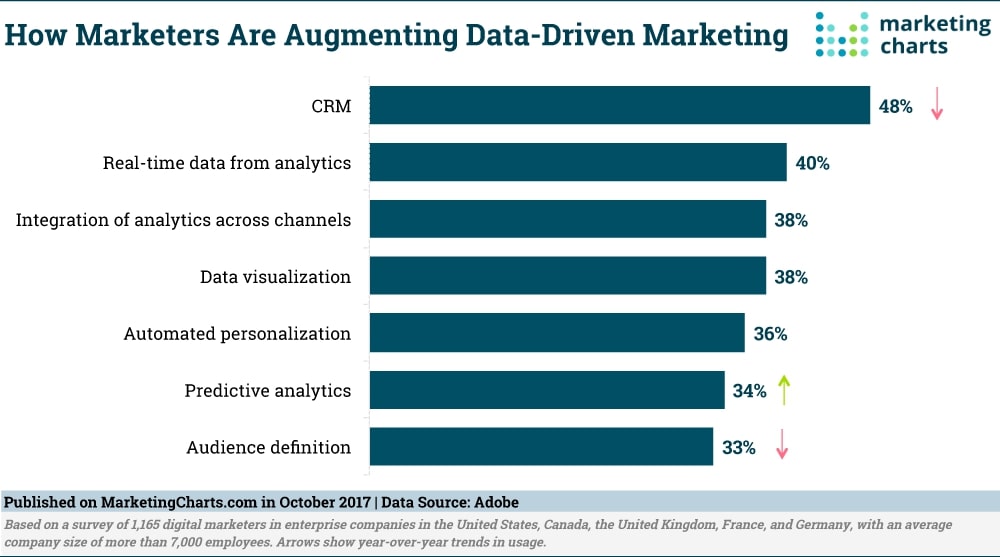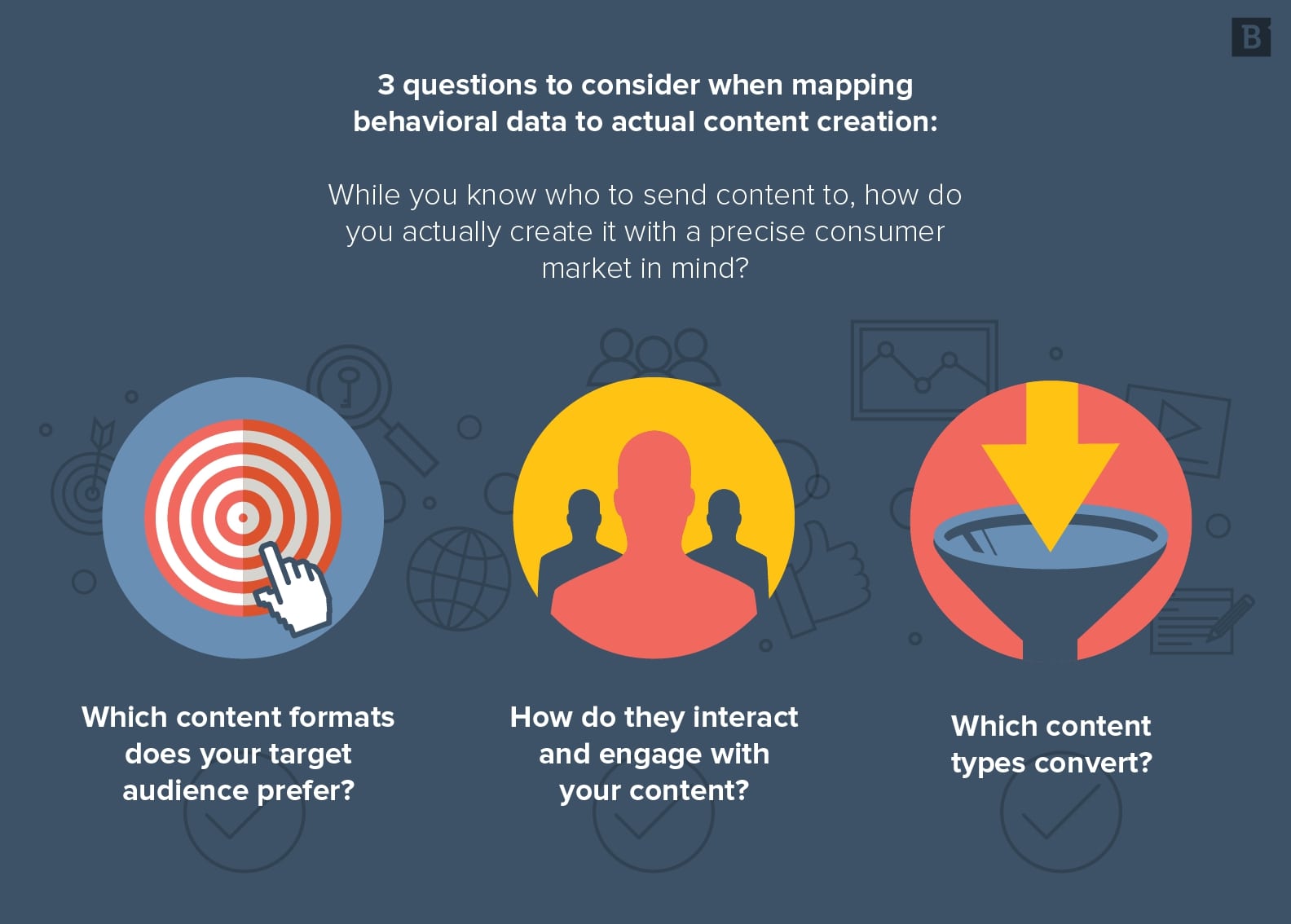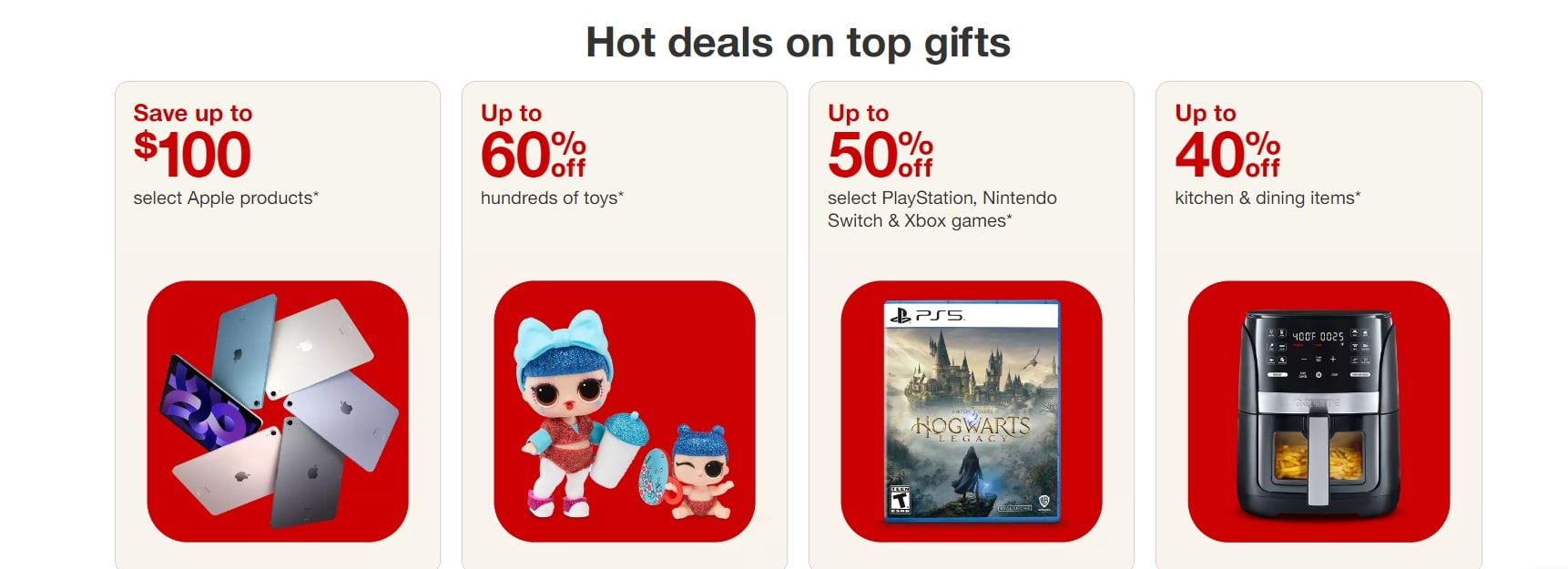20 Behavioral eCommerce Marketing Tips for 2025
Want to have a communication strategy that speaks to what drives potential customers to decide to buy from you? Learn about behavioral ecommerce marketing below.
Updated November 6, 2024.

Understanding customer behavior is crucial for the success of any business, especially in the world of eCommerce. With consumer preferences constantly shifting, the importance of adapting to these changes cannot be overstated. This is where behavioral marketing comes in.
Behavioral marketing strategies aren't just about attracting customers. It’s about understanding your ideal customer's purchase behavior and creating tailored shopping experiences that convert.
Three-quarters of marketers neglected behavioral marketing a decade ago. Today, creating personalized shopping experiences is one of the most powerful eCommerce trends. Companies that have mastered behavioral marketing outperform competitors by 85% in sales growth and achieve a 25% higher gross margin.
This comprehensive guide explores how behavioral marketing works, what forms it can take, and what distinguishes it from personalization and segmentation. You'll also discover innovative behavioral marketing ideas for eCommerce in 2024, and some real-world examples from leading companies.
Let’s start with the fundamental question.
What is behavioral marketing?
Behavioral marketing is a dynamic strategy that transforms insights into customers' online activities and interactions to deliver highly relevant content. This approach adapts to real-time changes in consumer behavior and ensures that marketing efforts are as targeted as possible.
(Source)
Behavioral marketing marks a significant advancement from traditional demographic-based targeting in the history of eCommerce. It offers a nuanced way to connect with new and existing customers and has become part of an effective eCommerce marketing plan.
Benefits of behavioral marketing for businesses
Behavioral marketing offers several key advantages to companies:
- Enhanced engagement – Understanding customer behavior allows businesses to create a profitable customer engagement strategy.
- Customer loyalty – Tailored marketing fosters longer customer relationships, as businesses successfully meet their consumer’s communication expectations. In turn, loyal customers buy more from your business and are more likely to recommend you to their peers.
- Increased online presence – Delivering content that aligns with customers' current interests translates into higher click-through rates from digital marketing efforts.
Benefits of behavioral marketing for customers
When you use behavioral marketing, everyone benefits. Customers can experience
- Engaging shopping experiences: Customers enjoy what's akin to personalized in-store service, with suggestions that mirror their preferences and buying stage.
- Reduced decision fatigue: Having relevant options when most needed reduces customers' effort in making purchasing decisions.
- Easier discovery of new products: Behavioral marketing helps customers explore products and services that align with their preferences and needs.
How does behavioral targeting work?
Behavioral targeting begins with collecting data, such as browsing habits, purchase history, and customer engagement metrics. Analyze this data to better understand, and even predict, customer behavior based on interactions across different channels. With this information, you can then create customer segments based on their interests and where they are in the buying cycle.
All that's left is to deliver relevant and timely marketing messages to these segments.
There are several data types you can utilize for successful behavioral eCommerce targeting.
Data types
Geolocation and device data
- Geolocation accuracy: These data vary from broad (continental) to specific (city-level) details. A good example is offering region-specific promotions or products that cater to local preferences and weather conditions.
- Device usage: The type of device used (desktop, tablet, smartphone) provides insights into the customer's browsing context and potential needs.
(Source)
Traffic source data
- Source identification: This involves recognizing the channel through which a customer arrives at the site.
- Usage in campaigns: Knowing the traffic source helps tailor the user experience. For instance, aligning pop-up notifications with the marketing campaign theme enhances message consistency.
Visit frequency and behavior
- New vs. repeat visitors: Messages for new visitors may focus on building trust, while repeat customers may see information about additional benefits.
- Product interaction analysis: Track the frequency of visits to specific products to identify customer interest levels. If a customer repeatedly views a product without purchasing, it might indicate a need for more information or a potential interest in discounts.
Purchase history data
- Loyalty building: After a customer's first purchase, the messaging focus may shift from selling more products to nurturing loyalty.
- Purchase patterns: A good customer relationship management (CRM) system can organize key customer data and use them in predictive analytics. For example, customers who have made multiple purchases in a given timeframe may be offered loyalty discounts based on data like total sales, types of products purchased, and shopping cart behavior
(Source)
Data sources
Your eCommerce website
Your website tracks user behavior through snippets of code called cookies, recording actions like page views and product interactions.
- In the case of unidentified users, this data helps you personalize experiences by observing their current session activities.
- For repeat visitors, their history contains their browsing data.
Mobile and apps
Mobile traffic and application data provide insights into in-app user behaviors.
Correlating these insights with desktop browsing patterns will give you a holistic view to create more personalized user experiences across all devices.
Email channels
Tracking email interactions, like opened emails and clicked links, helps you understand customer preferences.
This information allows you to send out more targeted email marketing campaigns.
In-store data
Integrating in-store data with insights into online behaviors offers an all-around view of your customers.
Understanding the differences in online and offline purchasing patterns helps you create an omnichannel marketing strategy.
(Source)
Behavioral marketing targeting vs. segmenting vs. personalization
Although closely related, there are certain distinctions between behavioral marketing targeting, segmenting, and personalization:
Behavioral marketing targeting
- Focused on customer interactions: This approach uses real-time data about how customers interact with a brand (browsing behavior, purchase history, etc.).
- Dynamic response: Behavioral targeting adjusts marketing messages timely based on a customer’s recent actions.
Example: If a customer frequently views a specific category of products, they may see targeted advertising campaigns or receive emails featuring those products.
Segmentation
- Group-based strategy: Segmentation divides the customer base into groups based on shared attributes like demographics, location, psychographics, or behavior.
- Broader strategy: While more generalized than personalization, segmentation allows marketers to tailor messages to groups with similar needs or preferences.
- Foundation for personalization: Segmentation sets the stage for more detailed personalization as marketers better understand and leverage customer segments.
Example: Geographic segmentation can involve dividing customers into separate groups based on whether they live in cold or warm climates.
(Source)
Personalization
- Individual-centric approach: Personalization takes customer data to the individual level, helping you craft marketing messages that speak directly to a specific customer.
- Deep data utilization: It leverages detailed data such as past purchases, page views, and engagement across channels.
- Intent recognition: Personalization goes beyond segmentation by addressing the customer's specific intent.
Example: A customer who frequently purchases sports equipment may receive personalized product recommendations and content related to their specific interests in sports.
Types of behavioral marketing
There are several strategies within Behavioral eCommerce marketing you can utilize that engage customers based on their online preferences.
Product suggestions
This strategy involves recommending your customers products related to what’s currently in their shopping cart. Specific actions, such as adding an item to a cart, generate certain suggestions meant to encourage additional purchases through cross-selling and upselling.
Amazon's similar product suggestions on searches is a classic example of this.
(Source)
Remarketing
Remarketing targets customers who have previously visited your website, or viewed specific products, but haven't yet made a purchase. Running digital advertising on platforms like Google and Facebook can remind customers of what they viewed to entice them to come back.
Email marketing
You can utilize each customer's interaction with your website to trigger other relevant marketing campaigns. For instance, sending them an automated email for cross-selling if they abandon the cart can nudge customers to complete their purchases.
(Source)
Demographic targeting
Demographic targeting uses age, location, and gender to tailor content and campaigns to specific customer groups. Studying your customer groups thoroughly to understand and target specific demographics helps you craft resonant marketing campaigns.
Automation
With advancements in machine learning, companies use vast data caches to anticipate customer behavior and preferences. Tools like HubSpot Marketing Automation software help you deliver content and offers that are most likely to resonate with individual customers.
Olay is a great example of utilizing artificial intelligence and automated customer surveys to enhance personalization and product relevance with its Skin Advisor tool. By estimating a potential customer's skin age, it recommends suitable skincare products.
(Source)
Behavioral marketing segmentation
You can base behavioral marketing segmentation on various criteria. In fact, the more factors you consider in customer segmentation, the more precise your segments will be.
The customer journey
Understanding each customer journey requires tracking their interactions with your brand from awareness to the final purchase.
By segmenting customers based on their position along the journey, you can tailor your eCommerce marketing strategy for every customer touchpoint.
Traffic sources
Customers can find your business in different ways, like:
- Search engines
- Social media
- Paid ads
- Direct visits
Segment your customers based on how they arrived at your site to ensure that the content and offers are appealing to each visitor segment.
The customer’s timing
Timing is a no-brainer. Segmenting customers based on when they shop helps you organize them into groups like:
- Seasonal buyers
- Weekend shoppers
- Holiday shoppers
Such segmentation allows for more timely marketing efforts and ensures that the right message reaches the right customer at the right time.
Geolocation
Geolocation segmentation involves tailoring marketing based on the customer's location. This can range from country-level to city-specific. For example, you may suggest products suitable for colder climates to a customer in New York while a customer in California may receive recommendations for items for warmer weather.
Different product benefits
Customers value different features and aspects of a product. While some may prioritize quality, others may look for affordability or convenience. Understand these needs and product usage patterns. Then, segment customers accordingly to craft messages that drive more conversions.
Buying frequency
Grouping customers based on their buying frequency generates segments like:
- Frequent shoppers
- Occasional buyers
- One-time purchasers
Frequent shoppers might appreciate loyalty rewards, while occasional buyers could be encouraged with special offers. Tailor your promotions correspondingly.
Average spend
You can also segment customers based on their average spend. High spenders may be interested in premium products and exclusive offers. On the other hand, discounts and value-for-money deals will work better with budget-conscious customers.
Brand affinity
Use social listening tools like Social Mention to understand customers' affinity towards your brand or competitors. Customers loyal to your brand might be receptive to upselling, while those with affinity to competitors can be targeted with comparative marketing and unique value propositions.
(Source)
20 Behavioral targeting ideas for 2024
Here are some innovative behavioral targeting ideas you can use in the eCommerce landscape this year:
1. Target according to traffic sources
Visitors from social media may respond better to trend-driven content, while search engine visitors may seek more detailed information about your product or service. Customize user experience by adapting your messaging to each target segment.
2. Use exit-intent popups
Exit-intent popups capture the attention of visitors who are on the brink of leaving your site. Offering incentives like discounts or exclusive content can effectively convert these potential abandoners into leads. This not only recovers lost opportunities but also aids in building email lists.
(Source)
3. Offer intelligent product recommendations
Use AI-driven algorithms to suggest relevant products to your customers. Making product suggestions based on their current interests and previous interactions tailors the shopping experience and can significantly increase sales.
4. Implement localization strategies
Tailor the content on your eCommerce website to align with your users’ geographic location. Apart from offering region-specific products, give customers the option to select the language and currency of their preference.
5. Send cart abandonment emails
Re-engage customers who have left items in their carts. Send them targeted emails with messages and visuals of abandoned products. A cart abandonment email (or even a browser abandonment email) can turn leaving customers into buying ones.
Carefully decide on the timing of these emails to ensure that they are nothing more than gentle yet persuasive reminders. You can also opt for sending cart abandonment text messages.
6. Set up restock reminders
Notify current customers when products they are interested in are back in stock. Use past purchase data to trigger these reminders and foster repeat purchases.
7. Analyze cart data
Examine shopping cart data to better understand your customers’ preferences and buying patterns. Generate insights and create targeted offers and product bundles based on them.
8. Use dynamic segmented ads
Craft personalized ads for each target segment. Tailor these ads to user interests and demographic data.
(Source)
9. Create dynamic landing pages
Develop landing pages that adapt based on visitor behavior or demographics. This makes each visitor’s experience unique.
10. Benefit from customer milestone-based incentives
Recognize and celebrate customer milestones with personalized incentives. This could include special offers or rewards on anniversaries, or after reaching certain spending thresholds.
11. Leverage targeted peer recommendations
98% of customers consider reviews a vital factor in their buying decisions. Featuring products purchased by other shoppers or highlighting peer reviews builds social proof. This influences purchasing decisions and increases trust in your brand, as shared experiences encourage sales.
12. Introduce a dynamic pricing model
Use dynamic pricing strategies based on customer data and market demand. Adjust prices in real time to reflect customers' willingness to pay.
13. Implement behavioral retargeting ads
Engage users who have visited your site but didn't make a purchase with behavioral retargeting ads. Tailor these ads based on their browsing history and interests.
14. Integrate smart chatbots
Deploy intelligent chatbots on your website to guide customers through their shopping journey. Use these bots for personalized recommendations and customer support.
15. Implement omnichannel marketing
Ensure a seamless communication experience across all customer touchpoints, from your website to social media. Omnichannel marketing ensures brand message consistency.
16. Offer personalized coupons
Create personalized coupon codes based on user preferences. Send them to your inactive customers to increase the likelihood of repeat purchases.
17. Leverage high-purchase intent actions
Monitor user actions indicative of a high intent to purchase, like adding items to a cart. Optimize these touchpoints to facilitate purchase completion.
(Source)
18. Use heat maps to target hesitant leads
Employ heat maps to analyze where users linger or drop off on your site. Use the insights derived to address users’ hesitations and optimize their experience.
19. Capitalize on special occasions
Tailor your marketing efforts around special occasions, holidays, and seasons. This taps into the heightened purchase intent during these periods.
20. Equip your business with the right tech stack
The right eCommerce marketing tools help you:
- Get insights into customer interactions, including AI-driven customer sentiment analysis
- Store and organize customer data for easy access
- Automate customer support and communication via email responses and text messages
Want to master relevant tools? Try an eCommerce course.
Behavioral targeting examples
Several businesses have mastered the art of behavioral eCommerce marketing. You might have heard of some of them!
Amazon
Amazon's recommendation engine uses customer purchase history, browsing habits, and item searches to suggest relevant products.
(Source)
Zappos
Known for its customer service, Zappos uses browsing history and past purchases to recommend footwear and apparel.
(Source)
Sephora
Sephora's use of past purchase data and search history helps them recommend beauty products. This is particularly effective given the personal nature of their product lines.
(Source)
Target
Target uses customer shopping data to offer personalized coupons and promotions both online and in-store.
(Source)
Virgin Atlantic Flying Club
Virgin Atlantic's Flying Club incentivizes frequent flying by awarding tier points that unlock different levels of benefits. This loyalty program not only boosts sales but also gathers valuable insights into customer travel habits.
(Source)
Airbnb
Airbnb’s retargeting strategy includes recommending local activities in travel destinations via booking confirmation emails.
(Source)
Behavioral marketing stats
Behavioral marketing doesn't just provide a more effective communication strategy. Here are a few statistics that demonstrate the impact of behavioral marketing in eCommerce.
Increased engagement and conversion rates
- Studies have shown that behavioral email marketing campaigns can lead to a 59% increase in user engagement compared to traditional, non-segmented campaigns.
- Websites that use behavioral science to run ads on different advertising networks have seen an average of 30% higher conversion rates compared to non-targeted ads.
Enhanced email marketing performance
- Email campaigns using behavioral triggers have a 152% higher open rate on average than standard bulk emails.
- These targeted emails boast a click-through rate that is around 50% higher than generic email blasts.
Improved customer retention
- 69% of customers appreciate personalization based on data they have shared with a business.
- Personalized email marketing contributes to reducing customer churn rates by up to 30%.
Impact on revenue
- Companies that excel in personalization and behavioral targeting see a revenue increase of 5% to 15% and a 10% to 30% increase in marketing spending efficiency.
- Behavioral targeting can lead to an average boost of 20% in sales opportunities.
Consumer response to personalization
- 80% of consumers are more likely to make a purchase from a brand that provides personalized experiences.
- 72% of consumers only engage with marketing messages that are customized to their specific interests.
McKinsey & Company’s Next in Personalization Report emphasizes the impact of personalization on customers’ buying behavior at every stage of their journey:
(Source)
A segmented marketing approach also has a positive impact on email marketing ROIs, CTSRs, and customer experience:
(Source)
Leverage purchasing behavior to grow your business
Behavioral eCommerce marketing offers outstanding opportunities for business growth. By harnessing the power of data, and understanding that humans are creatures of habit, behavioral targeting can turn insights into customized marketing strategies that connect with consumers on a deeper level.
eCommerce businesses must embrace this customer-centric approach to stay competitive in 2024. Leverage the latest tools and techniques in behavioral marketing to create shopping experiences that are as unique as each customer.
Meet the Author
Dragoş Voicilă is the Content Marketing Manager at Voog, where he brings a strategic approach to creating and distributing content that resonates with diverse audiences. Holding a degree in Advertising, he has spent over 7 years in the digital marketing arena. Dragoş is particularly adept at leveraging SEO and social media to amplify brand presence and engagement. In his free time, Dragoş enjoys exploring the latest technology trends and is an aspiring drummer.
























